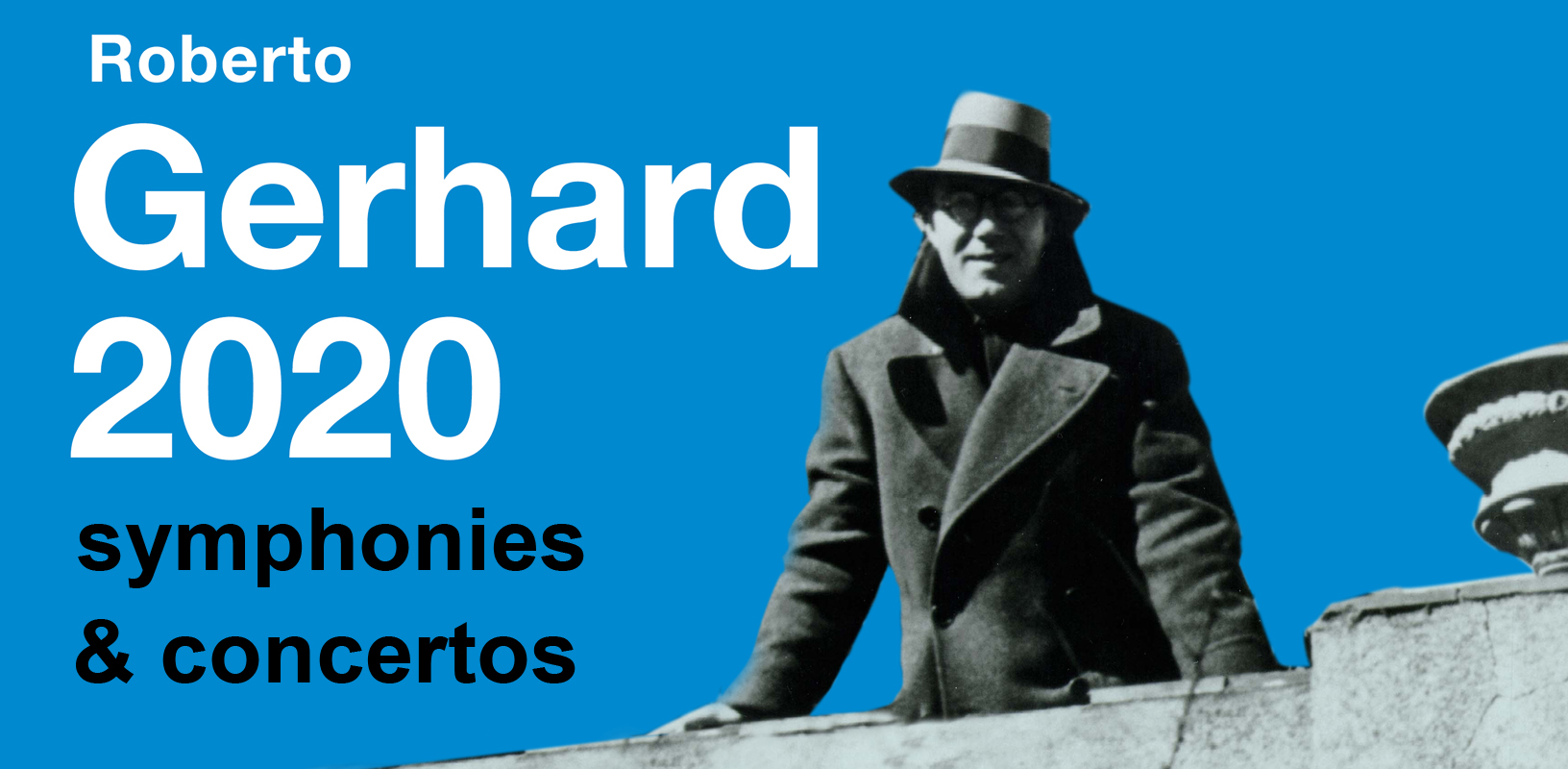Roberto Gerhard 2020: symphonies and concertos

The run up to the 50th anniversary of the death of Roberto Gerhard in 2020 offers the opportunity to explore the Catalan composer’s symphonies and concertos.
The 50th anniversary of Roberto Gerhard's death in 2020 offers the opportunity to explore the orchestral music of this 20th century master, including his five symphonies and four concertos. These works date from the second phase of his creative life, exiled from his Catalan homeland after the Spanish Civil War and building a new composing life in Cambridge.
The Violin Concerto (1942-45) is the most traditional of Gerhard’s three solo concertos, attracting soloists including Oliver Charlier, Daniel Hope and Ernst Kovacic. Extrovert in its solo violin writing, the work is also deeply personal, exploring themes of exile in the middle movement, and the shift from wartime to freedom in the rondo variations finale. The concerto also signalled Gerhard’s rapprochement with the music and techniques of his teacher Schoenberg, though the score’s richness is perhaps closer to Berg’s concerto, coupled with Bartókian atmospherics.
Gerhard’s Piano Concerto (1951), premiered at the Aldeburgh Festival, has proved to be his most readily programmable thanks to its string orchestra accompaniment, with performances by pianists including Peter Donohoe, Rolf Hind, Laura Mikkola and Gabriele Montero. Gerhard’s idiom draws on Spanish baroque keyboard techniques, combining Bartók’s punchy piano style in the outer movements and guitar-like figurations in the Requiem-imbued central set of variations. The Harpsichord Concerto (1955) is perhaps his most experimental in its opening movement, using percussion to complement the string orchestra and mirror the jangling resonances of the solo part. The second movement is a brooding Goyaesque interlude leading to a final danse macabre.
The earliest symphonic work undertaken by Gerhard in Cambridge was his Symphony ‘Homenaje a Pedrell’ (1941), written as a tribute to his teacher Felipe Pedrell. Drawing on Catalan folk themes from his mentor’s opera La Celestina, the symphony remained unperformed in Gerhard’s lifetime, though the final movement was extracted as the highly popular Pedrelliana for orchestra. Symphony No.1 (1952-53) built upon the musical evolution in the violin and piano concertos and points towards Gerhard’s mature style, with the Spanish inflections and dance rhythms increasingly abstracted. The work explores states of tension and danger, no doubt linked to the first of the composer’s heart attacks, with the final movement injecting a scherzando element alongside the drama.
Symphony No.2 (1957-59), commissioned for the BBC Symphony Orchestra, saw Gerhard exploring the mathematical control of rhythm, form and orchestration as well as pitch. He returned to the work at the end of his life, expanding the orchestration in his late style to produce Metamorphoses (1967), though the task was left incomplete at his death and was edited for performance by Alan Boustead. His final decade brought Symphony No.3 ‘Collages’ incorporating electronics and Symphony No.4 ‘New York’ commissioned by the New York Philharmonic following Bernstein’s US premiere of the first symphony, as well as the masterly Concerto for Orchestra (1965) [all three works published by Oxford University Press].
Barcelona and Madrid lead preparations for the 50th anniversary with performances this season of the complete Don Quixote by the Barcelona Symphony Orchestra on 9 February conducted by Josep Caballé-Domenesch, and a staged version of his Camus-based cantata The Plague [OUP] at the Teatro Real in Madrid conducted by Juanjo Mena next June.
All Gerhard's symphonies and concertos can be heard in exemplary Chandos recordings featuring the BBC Symphony Orchestra conducted by Matthias Bamert.
To explore Gerhard’s orchestral suites drawn from his danceworks visit our Dances and Drama survey.
For a selection of audio clips and a Spotify playlist, visit www.boosey.com/gerhard2020.
Photo: Boosey & Hawkes
